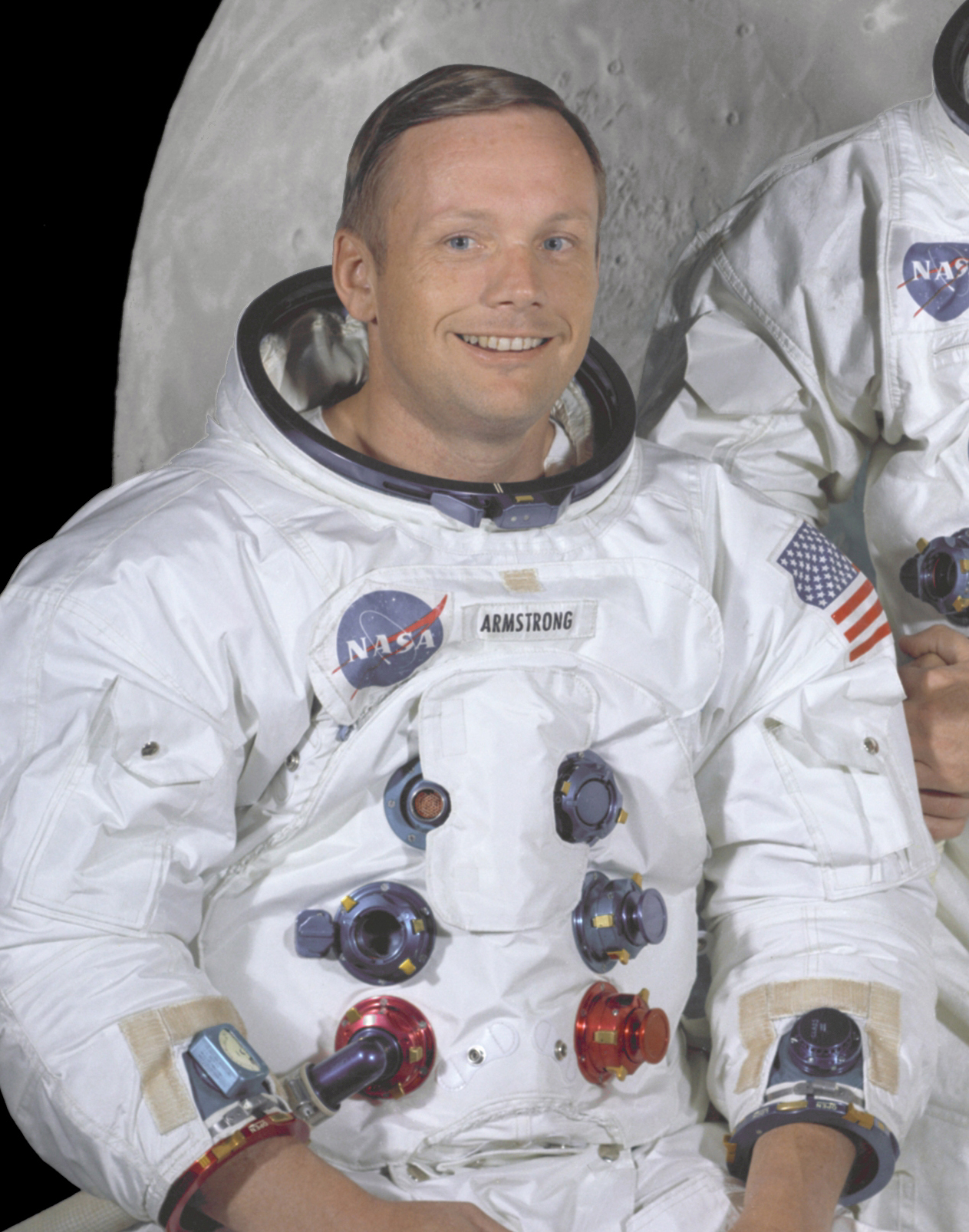

But, in truth, there was a secret meeting of top NASA officials in Houston which determined that not only should Armstrong be the "first out" because he was the commander but also because Neil had the modest, egoless type of personality (compared to the egocentric Aldrin) that as the iconic "first man on the moon" would serve the country and the world well. This was what NASA told not only the public but its own astronauts as well. Myth: NASA's decision as to which Apollo 11 crew member - Armstrong or Buzz Aldrin, the lunar module pilot - would first go down the ladder of the Eagle spacecraft and make the first step onto the surface of the moon was determined by the interior layout of the lunar lander's cockpit and by which one of the two astronauts could best access and egress through the hatch opening. The Apollo 11 crew, from left: from left, Neil Armstrong, commander Michael Collins, command module pilot and Buzz Aldrin, lunar module pilot, conducting a crew compartment fit and functional check, of the equipment and storage locations, in their command module. during the Korean War, flying 78 combat missions over North Korea. After all, Armstrong had fought in combat for the U.S.

Media at the time speculated that this was the main reason that NASA chose Armstrong for his role in Apollo 11, but it played no significant part in NASA's thinking. Navy) and would thereby represent the United States in this Cold War era as a civilian rather than a military man, thereby emphasizing the peaceful goals of the U.S. Myth: NASA chose Armstrong to be the commander of the first landing and the first man on the moon because, of all the commanders, he was the only one who was no longer active-duty military (he had been U.S. Information gained from the highly successful X-15 program contributed to the development of the Mercury, Gemini, and Apollo manned spaceflight programs, and also the Space Shuttle program. It set the world's unofficial speed and altitude records. The X-15 was a missile-shaped, rocket-powered aircraft 50 feet long with a wingspan of 22 feet.

Neil Armstrong is seen here next to the X-15 ship #1 after a research flight.


 0 kommentar(er)
0 kommentar(er)
